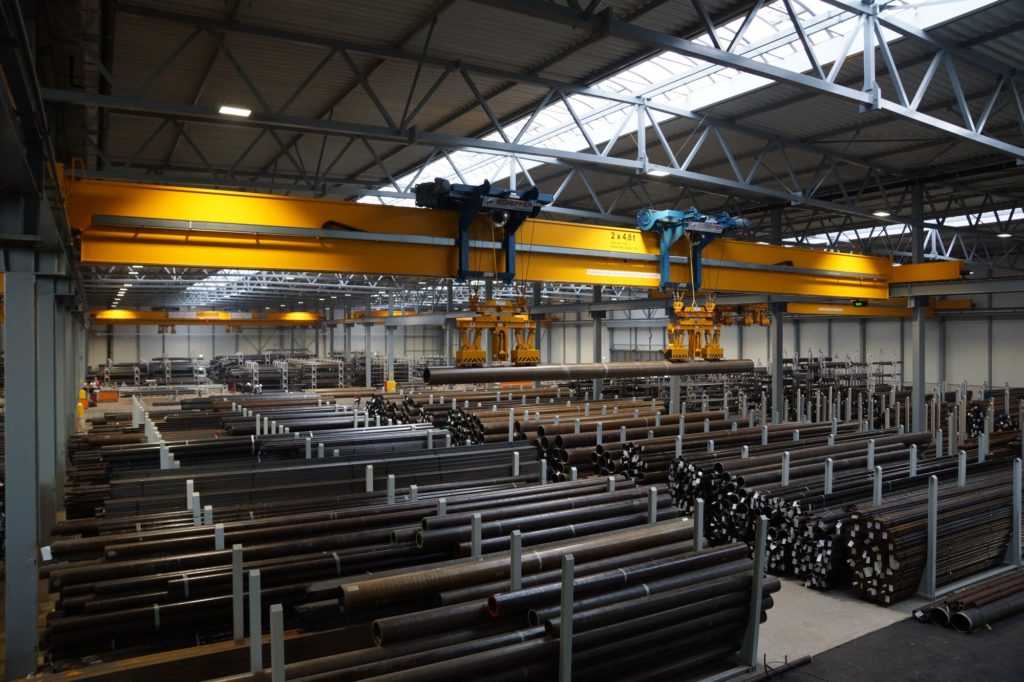Since 2011, there have been over 40 crane-related deaths per year in the United States. Many more people working with overhead cranes have suffered life-altering injuries on the job site.
One way to reduce the likelihood of crane-related accidents is to keep the equipment in good condition at all times. The lack of proper inspections and maintenance are among the top common causes of crane accidents.
Of course, the importance of proper overhead crane maintenance goes beyond just safety reasons. It ensures that your overhead crane performs at peak levels when you need it to, which averts potentially costly downtimes. In addition, it helps extend your crane’s lifespan, which is a massive benefit given how much money you need to purchase this construction equipment.
Today’s guide highlights some proven crane maintenance tips to keep your equipment in top shape.
Let’s delve right in.
Understand When You Need to Perform Maintenance

One of the leading reasons for equipment failures is overlooking preventive maintenance. Many people pay little attention to the condition of their equipment until it breaks down during a job.
So, when should you conduct maintenance inspections? These four types of inspections shed more light on the recommended frequency:
Initial Inspections
This type of inspection is usually conducted when you buy cranes. It includes load testing and a comprehensive hands-on inspection of the crane at the time of installation. These inspections are also necessary whenever you repair your overhead crane’s critical load-bearing components.
Periodic Inspections
Periodic maintenance inspections are usually performed every month or so, especially when you use your crane frequently. During these inspections, a professional checks the crane for any potential problems that need to be addressed.
Where the crane experiences little use and has little potential for safety or repair issues, you can do periodic inspections annually.
Frequent Inspections
Frequent inspections are done more often than initial and periodic checks, especially during seasons when the crane experiences heavy use. There’s hardly any need for periodic inspections when you do frequent inspections.
Frequent inspections entail a visual inspection as well as an operation check of your crane’s critical items, including limit switches, chains, hooks, wire ropes, and so on.
Daily/Shift Inspections
These inspections are typically done by the crane operator every day or before and after using the crane. The Occupational Safety and Health Administration (OSHA) stipulates that you should inspect heavy equipment at the start of every shift. The goal is to be completely sure of your overhead crane safety before operating it.
Know What to Check
Now that you know how often to conduct maintenance checks, it’s time to look at what exactly you need to inspect. Here’s what to do.
Conduct a Checkout of the Area
This inspection is meant to ensure that the area around your overhead crane doesn’t pose any risk to the equipment itself. Check whether any obstructions can impede your crane’s free movement. Is the area large enough to ensure that the crane can safely lift, move, and place loads?
Be sure to check the below-the-hook devices as well. Are they in good condition to lift loads? Before you lift any load, make sure it’s either equal or less than your crane’s rated load capacity.
Do a Preliminary Equipment Checkout
Once you’re through with the area check out, move on to the preliminary equipment inspection. Look out for loose or broken parts on the bridge, trolley, hoist, and runway. Check the electric systems to ensure that they’re in proper shape.
Take a close look at the wire rope. Is it properly reeved and seated in the drum grooves?
Next, check the bottom block. You want to make sure that this component isn’t twisted. Ideally, all lengths of wire rope should be separate.
Inspect the pushbutton pendant controls as well to make sure that they’re not cracked, torn, or missing.
Check the Powered Systems
Your crane’s powered systems are a critical component of your crane and need to be inspected frequently. If possible, check these parts daily.
The buttons need to operate smoothly. Take note of any sticking you experience. When you release the pushbutton, it should swiftly return to the off position.
Turn on the push button to see whether your crane’s warning device is functioning properly.
Check whether the hoist hook rises smoothly when you push the UP button. Be sure to confirm that the upper limit switch functions properly as well.
Don’t Forget About the Miscellaneous Items
Some components of your overhead crane are easy to overlook, but they are important for the proper functioning of your overhead crane. That’s why you need to make these items part of your maintenance checklist.
Inspect the load chain for any nicks, gouges, cracks, distortion, or corrosion. Check the contact points for wear, and don’t forget about the chain sprockets.
Other items you need to look at include the trolley and bridge motor brakes. You need to ensure that these components are operating smoothly at all times. The same applies to the air or hydraulic lines.
Check whether the fire extinguisher is working well too. You never know when these items will come in handy at the job site.
Take Good Care of Your Overhead Crane to Enjoy Using It
Your overhead crane is a huge investment, and it only makes sense to take proper care of it. Through regular maintenance, you can make sure that your crane performs at the top level, making a world difference in your projects. More importantly, a well-maintained overhead crane is generally safer to use.
Are you interested in reliable preventive maintenance services for your overhead crane? Contact us today and learn how we can help.
